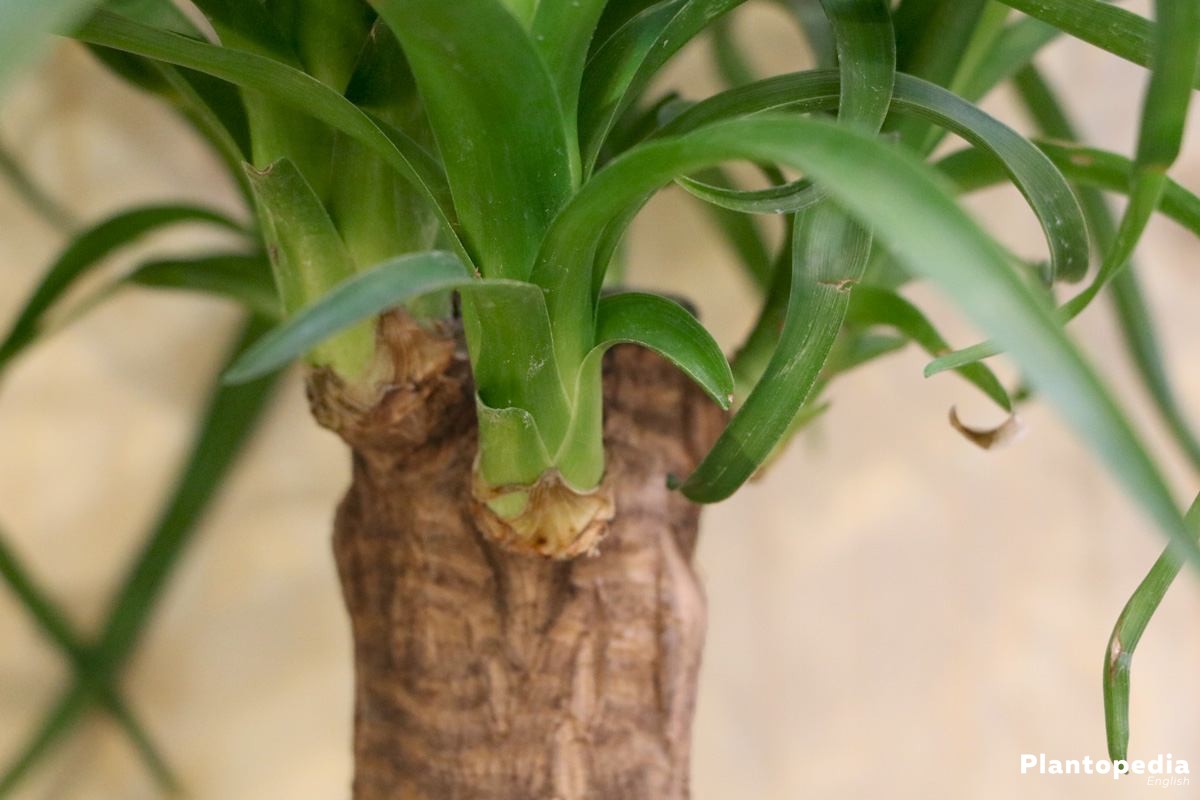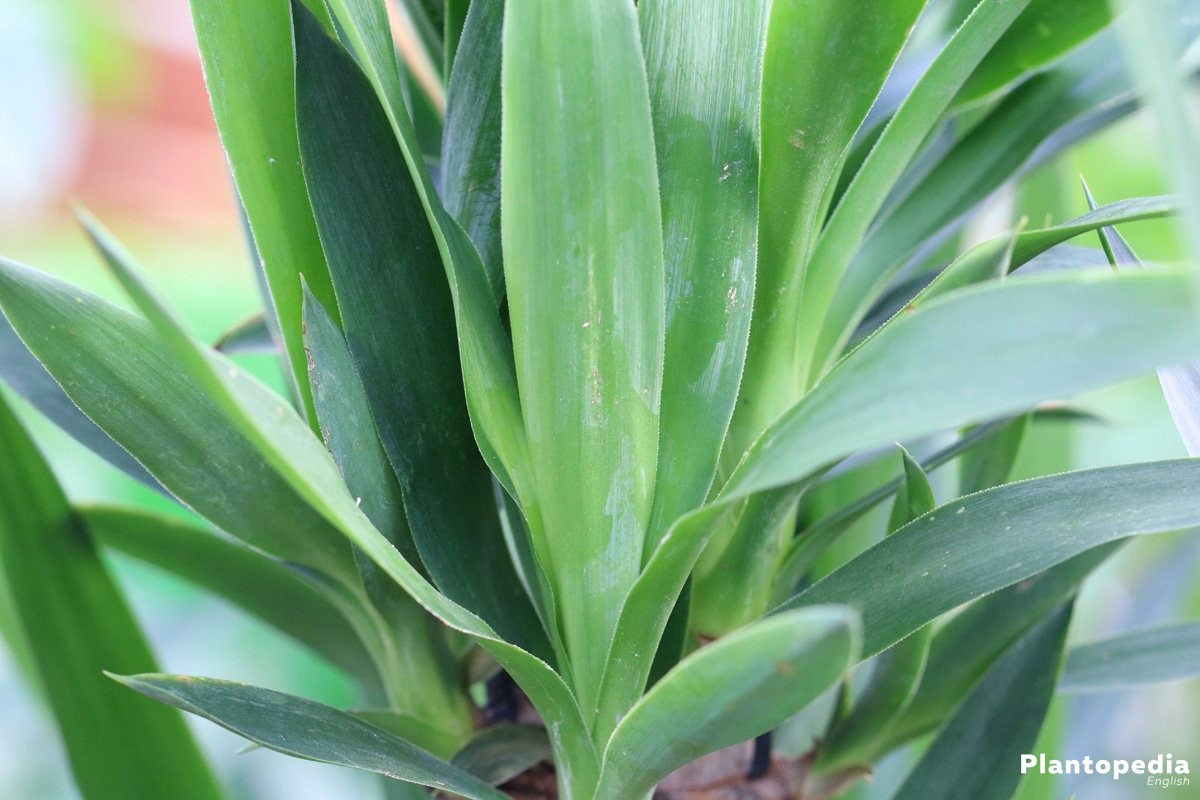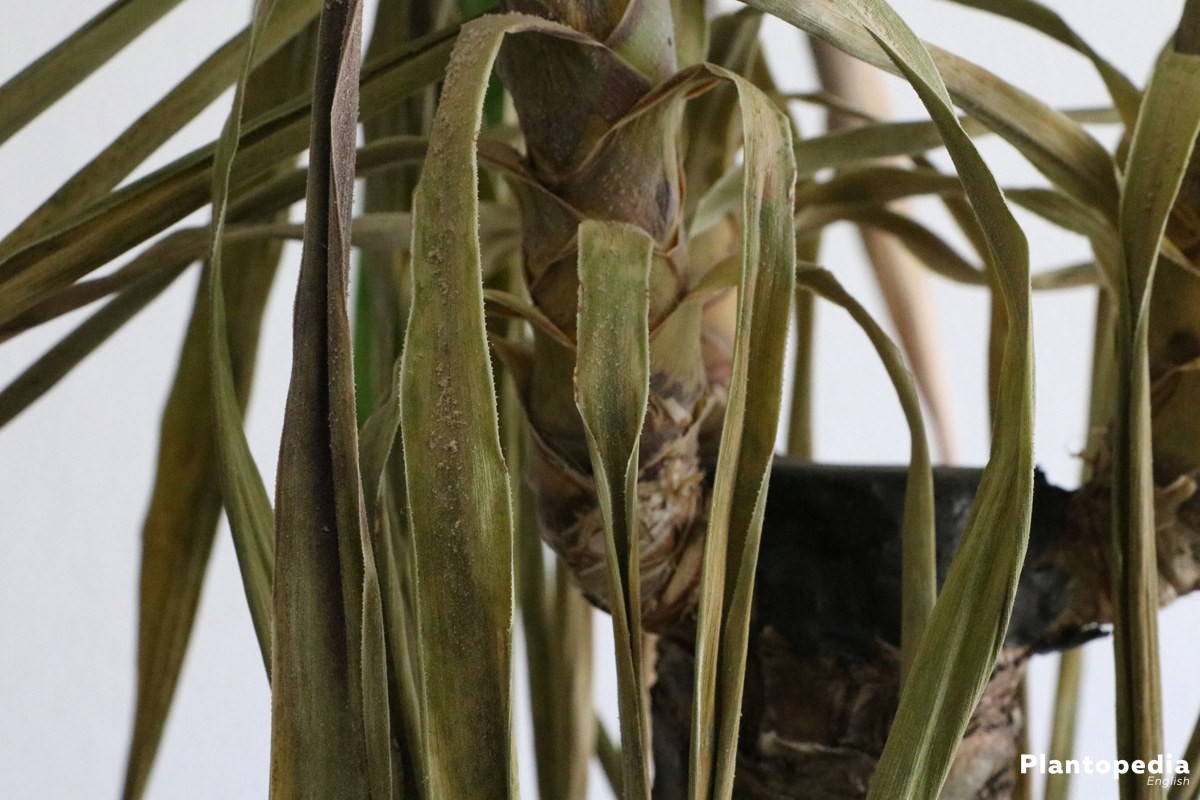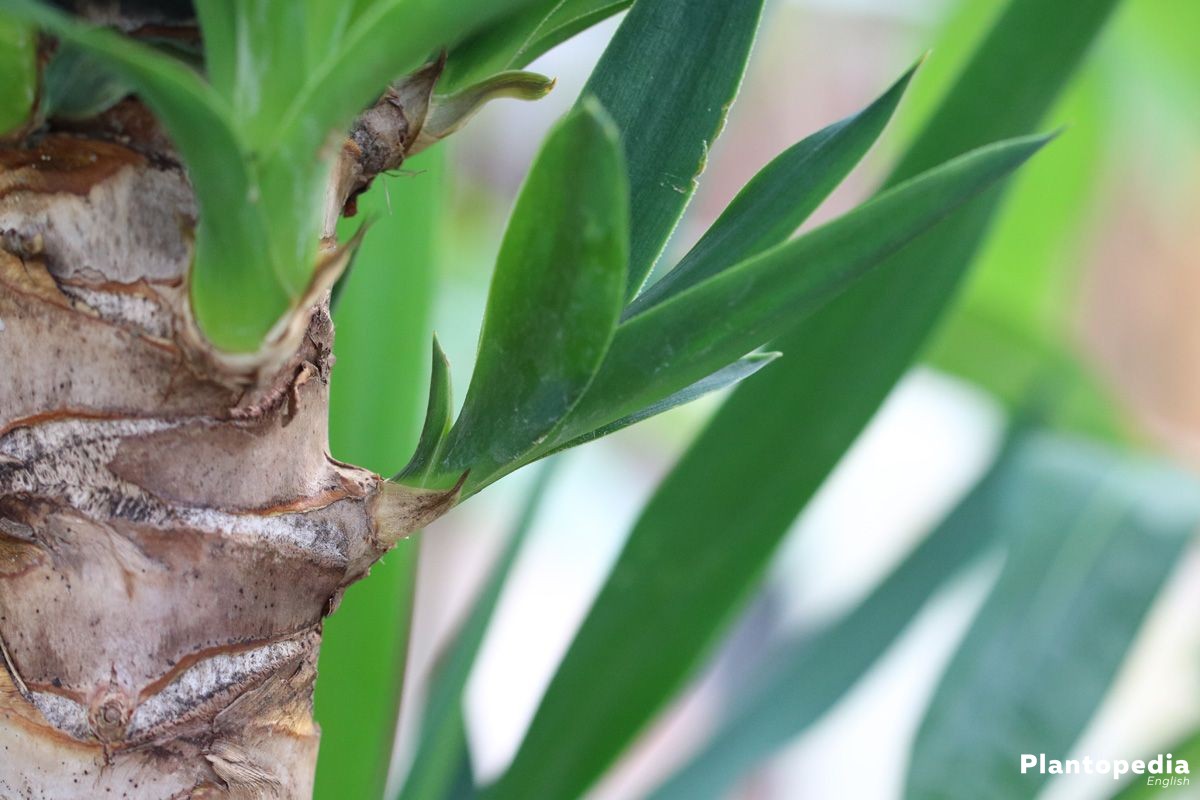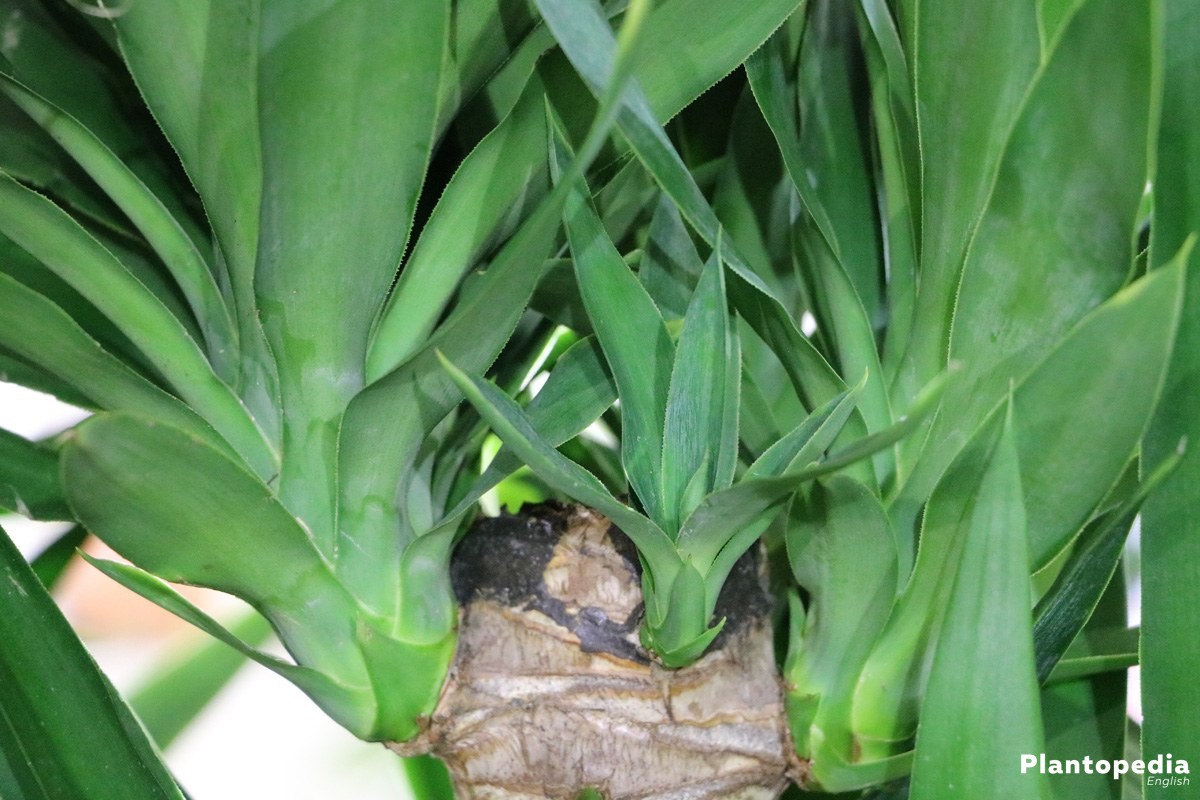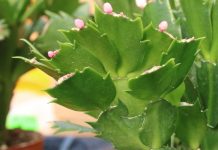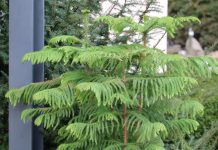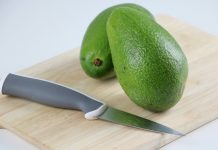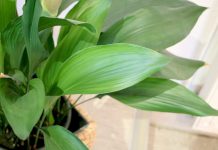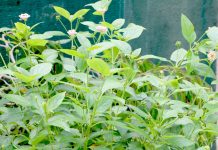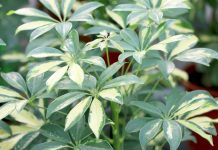If the yucca palm has enough room, its leaves will grow widely and the plant shows itself in all its glory. But if the plant is well-cared for and under ideal conditions, it can quickly reach the ceiling and you will have to trim it. The following directions will show you how to trim the yucca palm, cut leaves and gain cuttings.
Why the cutting?
Contents
Caring for a plant also includes trimming it. There are a few different situations for that: you do have to regularly cut brown and yellow leaves. The plant will grow stronger from that, since it only has to care for healthy leaves once the others have been cut off. If it has grown too big, it has to be cut, too. To do this, smaller and bigger parts of the plants have to be cut off.
Really grave situations can occur, if the stem has already started to bend and won’t grow properly upwards anymore. The stem can turn back to the main stem and connate with it. Therefore it’s quite important that you act timely and give the plant enough space to grow. Cut-off yucca parts can be used as cuttings and new palms can be cultivated with little effort. They also breed quite effortlessly.
When the trimming?
When do you have to trim the Yucca Palm?
Leaves shouldn’t bump against the window since sunlight can cause burning. If the plant has already grown so big that you cannot avoid this situation, you definitely have to trim it. If the stem has grown crooked, the balance can be thrown off and the palm cannot stand on its own, since one side is overweight. This is another case in which you have to trim it. At last, optical reasons can apply: By trimming it, the desired form can be gained. Above the yucca, enough place should be left so that it can grow freely. Directions for Trimming and Breeding with Cuttings.
Ideal Time for Trimming: Spring
Yucca palms should ideally be trimmed during the spring. If you feel spring coming and if the weather is sunny and warm, the perfect time for planting cuttings has come. You do have to consider that the plant has to adapt to the sun, after the darker months. If the first spring sun appears you should wait about 14 days, so that the yucca palm can get used to the new conditions. If the change is too drastic you have to care for a short-time darkening. For this the location and intensity of the sun is important. We generally advise you to trim the yucca palm once a year and gain cuttings through this.
Can the Palm also be trimmed during the Summer or Winter?
You can essentially trim the yucca palm during other seasons than spring. But the plant sprouts quicker during the spring and also grows better, so that many choose this time. Especially the trimming of big parts from the main stem acts as a burden for the yucca and it reaches its maximum strength during the spring.
You should always check that there’s a strong root ball, so that the plant can absorb enough water and nutrients from the soil and get stronger. Diseased plants, or yuccas with a small root ball, should preferably not be trimmed, they have to go through a phase of recovery first. On the other hand, rotten leaves are also a burden and have to be cut off.
Tool
Tools and Aids for Trimming:
- clay pots and saucers
- 20 litres flower soil
- 1 can grafting wax
- 1 knife from the garden centre or a fret saw
- bread knife
- smaller knife
- water
- watering can
- ladder
Alternatives: The yucca palm’s stem can be quite thick and woody. You have to get a good knife, especially for safety reasons. Working on it can be simple and quick, but this comes with the danger of slipping off. You can theoretically use a sturdy household knife, but only if the cutting surface has a serrated edge. A fret saw is an inexpensive alternative and often already exists in households. Two different Possibilities: Growing in Soil and the Root’s Development in Water.
There are basically two different possibilities of breeding the plant. The classic way is to put the palm into water, so that the roots can sprout. But this also comes with the risk of rotting, which is high for yucca palms. We therefore advise you to grow the cuttings in soil. In both cases no guarantee is given that the breeding succeeds, but chances are high. The method of planting it directly into the earth has proven itself and increases your chances of success.
Trimming
Trimming the Yucca Palm
To begin with, a big part of the palm has to be cut off. You should leave a bit of greenery on the stem so that the look remains. The cut-off part can also be divided again, if it’s big enough. The upper cuttings have to be coated with grafting wax, it can easily be spread with a knife and prevents the cuttings from drying out. The wax is thick, similar to honey and can be spread without any problems.
Planting
Planting the Cuttings
Lower leaves on the cut-off parts has to be cut with a household knife. If they were to stay and touch the soil, they can rot. The plant parts can now be put into a clay pot, which has been filled with flower soil. To cater for enough footing, the stump should be put at least 5 centimetres into the soil and adpressed. After that, the plant has to be watered with lukewarm water.
Care
Caring for the big Plant
After trimming the Yucca Palm you will have to bring it into its ideal condition. All undesired parts have to be cut off, but be careful. You mustn’t cut too many twigs, since the plant will be strained by this. If parts touch the ceiling, the walls or window, you definitely have to trim it. If the cuttings have the right size, they can be planted into the ground, to grow new palms. After that, you do have to apply grafting wax onto all cut surfaces.
Trimming the Leaves
If the plant has developed brown, or yellow leaves, they should be trimmed. Simply pulling them off won’t be possible. If they have dried, you can try pulling them off, but be careful not to harm the stem. Unattractive, yellow leaves can be easily cut off with a household knife. The plant will be brought back to looking great and you can concentrate on healthy leaves.
Growing Cuttings: How long will it take?
Growing the cuttings can take several weeks, but if it goes smoothly, success is on your side. Chances are high that your intentions will work out. If moving the plant will cause it to break off, the resulting cuttings can also be planted. A home-grown yucca palm can be used in your conservatory, or as a present for friends.
Maintenance during the first Weeks
The soil inside the cutting’s pots has to be kept moist. Therefore, during the first weeks, the plants have to be watered regularly, but you should avoid water-logging. A specifically placed hole on the pot’s bottom should be sufficient in draining off the excess water. Plants should also not be watered in a gushing way, but slowly. Only if the water has seeped away into the soil, you can continue watering. By this, you can find the right amount and the roots can absorb the water in a better way.
Tip: If you put a pebble into the hole, less earth will escape through it.
Minimum Height for Planted Pieces
It is advised that plant parts have to be at least 30 centimetres. If they are too short, the new yucca palm cannot grow its twigs sufficiently and the growth will be hindered. If you look closely, small holes can be made out on the stem, they are called „sleeping eyes“. Every cutting should have one of those. If minimum height has been complied with, chances are bigger that there are „sleeping eyes“.
Grafting Wax for sealing
What is Grafting Wax?
Grafting wax is used to seal the cuttings during grafting and tree cuttings. It is also used in the private sector and for agricultural fruit-growing. High-quality grafting wax is created with a fungicidal resin and wax combination. I can be applied with a spatula, or knife. The product should also be plant compatible. If the palm is outside you house, the grafting wax’s resistance to weather is also important.
A few means are concentrated with fungicides, they prevent a possible fungal infection. Grafting wax can also be purchased in solid form. In this case, you have to heat it up. The plant has to be dipped headfirst into the liquid wax, so this method isn’t made for trimming the yucca palm.
Can grafting wax also be made by yourself?
Grafting wax can also be made at home.
This is a possible recipe:
- 1 kilogram pitch
- 150 grams alcohol
- 75 gram beeswax
- 1 tablespoon flaxseed oil
No matter if bought or made at home, you have to be careful with grafting wax. It is poisonous and mustn’t be eaten. You should be especially careful if there are kids around. Since the yucca palm is usually cut at the top, this provides some safety, but you have to make sure that the wax won’t drip or run down.
Are there Alternatives to Grafting Wax?
If you don’t want to use grafting wax, you can use normal candle wax. It’s not as poisonous, which is a plus for households with children. Just light the candle, so that the wax can melt slowly. Hold the candle skewed, so that the wax drops down onto the cutting surface. After a short time, the wax will cool down and the cut surface is sealed. Since the wax has to become liquid beforehand, it takes some time to cover the whole cut surface.
Seal the Cut Surface
How long does the Wax stay on the Cut Surface?
You should generally aim for keeping the wax on the plant as long as possible. Sometimes you need to reapply it, if it bursts. If moisture would enter the cut surface, the stem could swell up, since it absorbs the water. The yucca palm is quite different in this point to other trees, the stem can rot really easily, if water enters, and the plant can be irreversibly damaged in the worst case.
Costs for breeding
How much does Breeding via Cuttings cost?
We usually assume that some means are available at the household. If that’s the case, the following costs will occur.
- clay pots with saucers: 1€
- 20 litres flower soil: 3€
- 1 can grafting wax: 9€
- 1 knife from the garden centre (20€) or fret saw (5€)
- Final costs: 18 to 37€
The more cuttings you want to gain, the higher the cost. Often older flower pots are present that can be used again. A big part of the costs is the grafting wax. To seal everything, you usually don’t need a whole can, so you can keep the rest and reuse it. Candle wax, or homemade grafting wax is cheaper and a good alternative.


